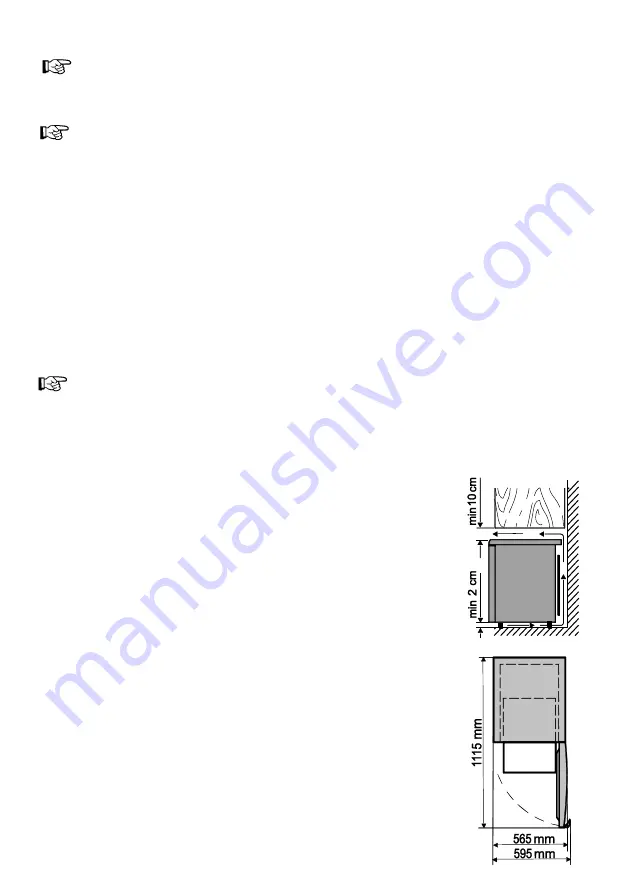
4
The appliance should be transported in the vertical position; do not
tilt any more than 30°. The manufacturer will not be responsible for any
damage of the appliance that results from non-compliance with the
instructions for transportation.
The manufacturer guarantees reliable operation of the refrigerator when
the relative air humidity not greater than 70 per cent and the ambient
temperature is:
+16 TO +32 DEGREES CELSIUS (Climate class N);
+16 TO +38 DEGREES CELSIUS (Climate class ST);
+16 TO +43 DEGREES CELSIUS (Climate class T).
INSTALLATION AND OPERATING CONDITIONS OF THE
APPLIANCE
Positioning:
•
This appliance can be installed in a dry, well ventilated indoor where the ambient
temperature corresponds to the climate class indicated on the rating plate of the
appliance.
Do not install this appliance in areas that are too humid or too colds, such as
the construction appendices, garages or wine cellars. Place the appliance
away from heat sources such as kitchen stove/oven, radiators, or direct
sunlight. The appliance must not touch any pipes for heating, gas or water
supply, or any other electrical devices.
Minimum distances from the heat sources:
- from the electric gas and other ovens - 30 mm,
- from oil or coal fired ovens - 300 mm,
- from built-in ovens - 50 mm
If there is no possibility of ensuring the above- mentioned
distances, provide an appropriate insulation board.
•
Do not cover the ventilation holes at the top of the appliances –
it must be a good air circulation around the appliance. There
should be a gap of at least 10 cm between the top of the
appliance body and any furniture that may be above it. If this
requirement is not followed, the appliance consumes more
electrical energy and its compressor may overheat (see fig.).
•
If the appliance is placed in a corner, a gap must be left between
the appliance body and the wall so that the door can be opened
enough (see fig.). External dimensions for installation
•
The appliance must stand on a level surface and must not touch
the wall. If necessary, regulate the height of the appliance by
adjusting the levelling feet: by turning them clockwise – the front
of the appliance rises, by turning them counter clockwise – it































